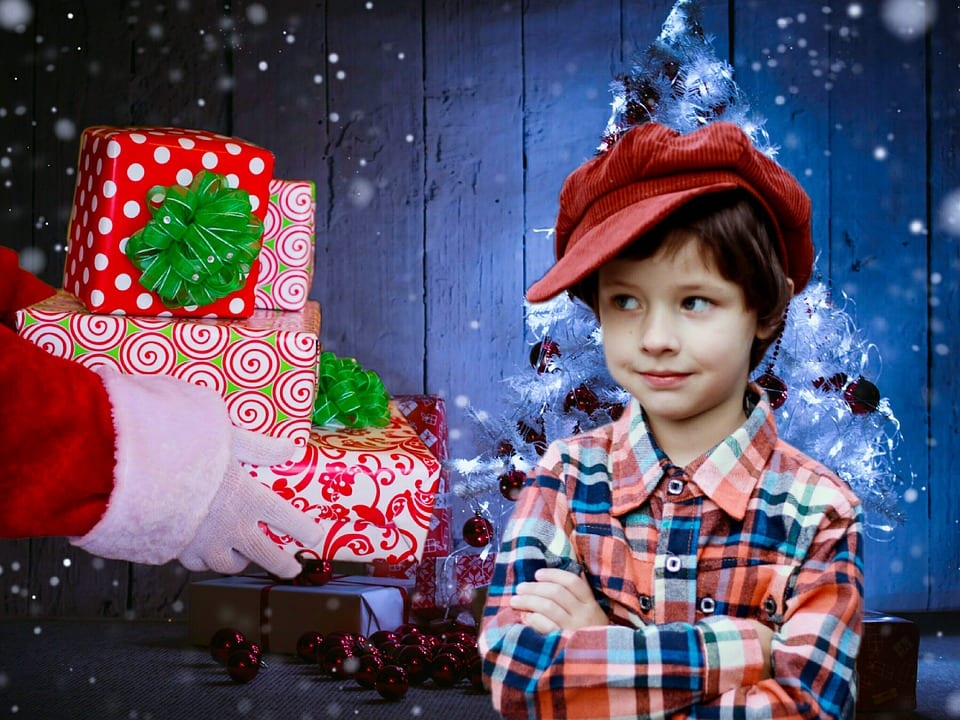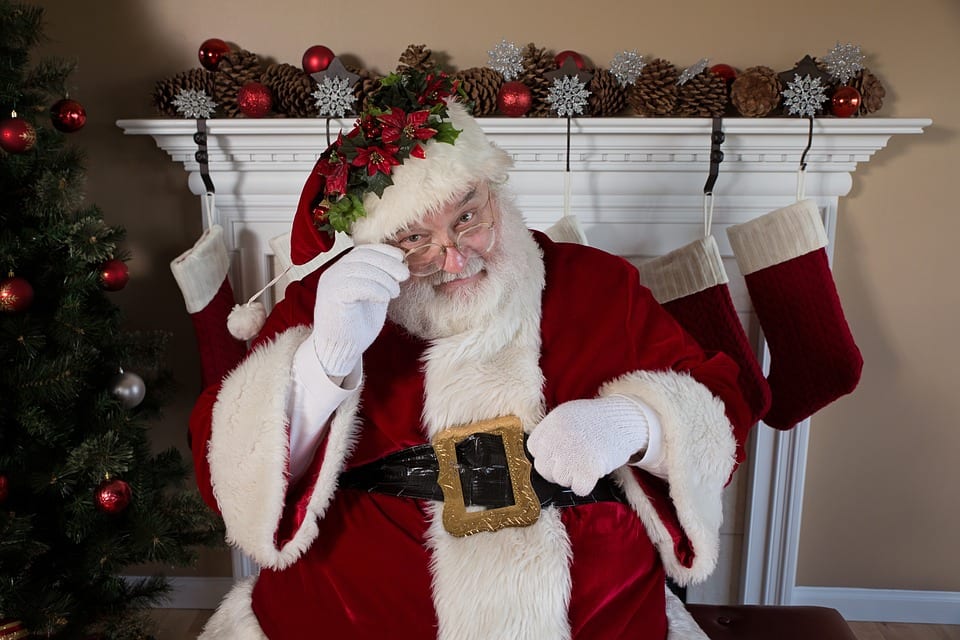My son was about 11 months old the first time he encountered Santa Claus, and he wailed like a banshee from the moment he set eyes on the jolly, red-suited man with the (real!) white bushy beard until we were safely away with our classic first Santa pic tucked in my purse.
Honestly, I’m not expecting this Christmas to go any differently. After reading the expert opinions in this article, though, I’m not at all bothered by my kid’s reaction to Santa – I’m encouraged!
That’s because it could mean that my little guy has an innate understanding of “stranger danger,” which could help me when I try and drive the point home in years to come, hopefully minimizing the chances of him jumping into a stranger’s car for a bite of candy or a cute bucket of kittens.
But back to why crying at Santa could be a good sign.

Photo Credit: Pixabay
Ari Brown, M.D., reminds us over at Parents that babies and young children don’t have any context when it comes to Christmas or Santa Claus. They don’t know presents will arrive on Christmas morning, or what presents are, even.
“Remember, little children haven’t spent the last 30 years watching Miracle on 34th Street and waiting for Santa to leave presents on Christmas morning. This is a whole new ballgame for them. They might see Santa simply as a stranger in red.”
And you know, a stranger in a suit who wants you to sit on his lap and whisper secrets is…a bit creepy?

Photo Credit: Pixabay
Mandy Seyfang, a senior occupational therapist in Australia’s Department of Education and Childhood Development, adds on ABD Adelaide that “often we actually say that there could be a red flag if children are running off to strangers, are approaching strangers for comfort at this age [up to five years old]. That would be a sign that maybe things are not going so well for young children. To have that natural fear of the stranger, of Father Christmas, of Santa, is really a good sign for your children.”
Even as children age, she warns, the emotional baggage that Santa loads into his sleigh – along with the expectations and worries – could stop them from showing excitement at going to see him and snap a photograph.
“The idea that this person might have lots of hopes and day dreams that you’ve been planning around the list of what you’re wanting for Christmas and that he’s got some special powers, that he knows if you’ve been naughty or nice and can bring you lots of presents or not. So you can see why children too can get quite emotionally loaded up for this special trip to see Santa that then might all break down quite quickly into tears if they get overwhelmed by that.”
All of that said, there are ways to at least attempt to alleviate your baby or child’s stress before plopping them down for the camera and asking for smiles.

Photo Credit: MGM
Seyfang reminds us that “children work out if something is safe or not at that age by looking for the parent,” so you can greet Santa with a smile and a handshake, take a turn in his lap yourself, or sit nearby, if that helps.
Your baby still might cry – and you might want them to, given what we’ve learned – but at least you tried. And as children get older, remember to ask whether they’re comfortable in a situation and then respect their decision.
If that means no Santa picture, so be it. Your kid’s emotional development is more important than a laugh, or even a cute memory on a shelf.






